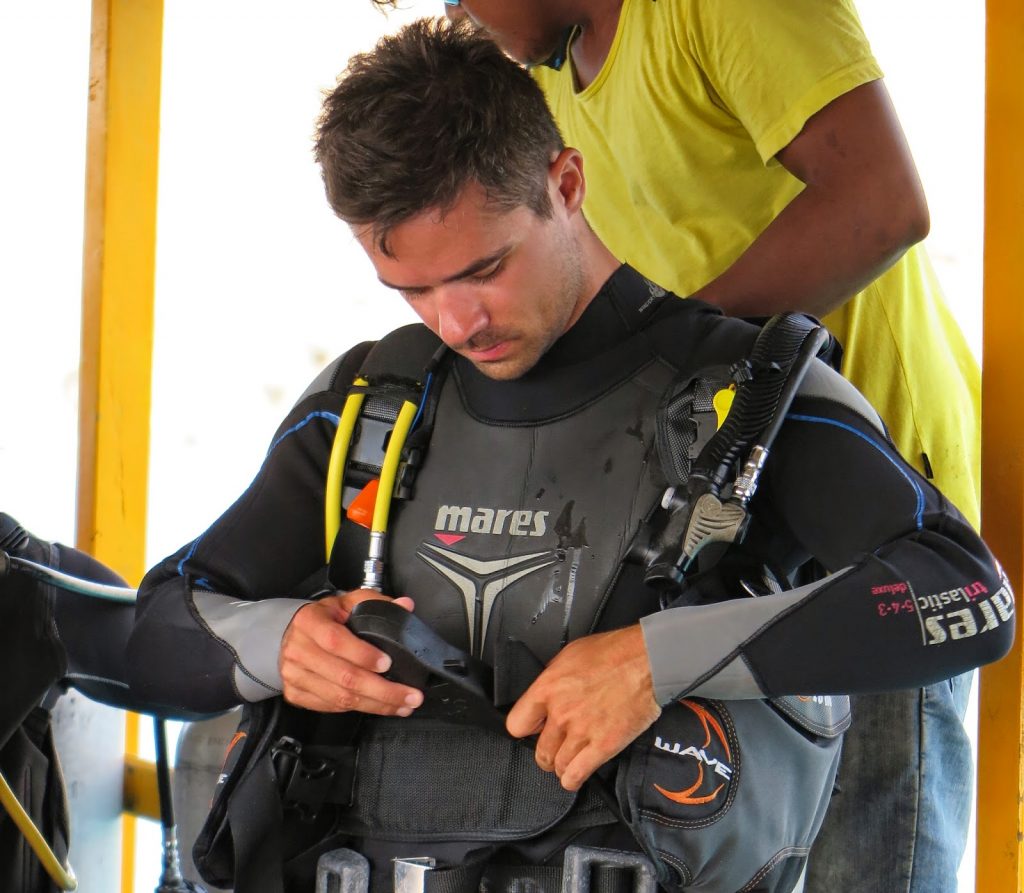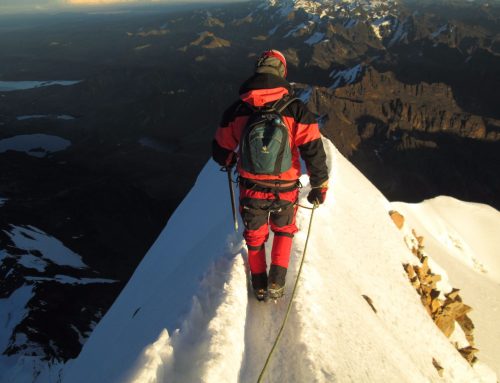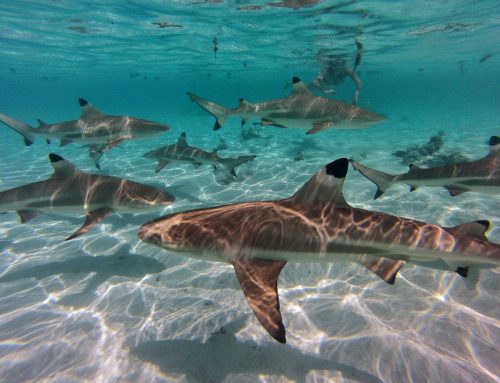Castle Rock. After a calm dive in Seraya Bazaar, we received the briefing for Castle Rock in the morning. This marine mountain with several pinnacles is situated at a depth of about 25 meters in the waters between the islands of Toko Toko and Gili Lawa Laut. The castle summit is about five meters below the water surface.
In this area huge shoals of tuna and yellow fusiliers attract dolphins and mackerel. In between, black and white tip reef sharks patrol the area, often accompanied by eagle and manta rays. That big action is due to the strong under current. Beginners are not allowed to dive here.

Dive plan and conditions
We jumped off the boat with a “negative entry” into the water. That means diving down immediately after the jump as quickly as possible and gaining depth soon because the currents here are most intense at the surface. We would meet at the bottom of the rock for the first time, our dive guide said. In the meantime there would be no time to look around. We should dive down very closely behind each other and as quickly as possible so that we don’t get lost due to the blurry view today. In fact, we didn’t have the best day. Yesterday was a full moon. So the current today was the strongest.
Precondition for diving down
Of course. The prerequisite for sinking as quickly as possible is to completely empty the air in your buoyancy compensator jacket. As it turned out, that wasn’t the case for me. Somewhere an air bubble was hidden that I didn’t notice before. Being the last one in the group, I moved my two fins as strong as I could when diving. But I just couldn’t gain depth and keep up with the others. Soon the group was gone and the current pulled me aside. Little panic. Once again I was bracing myself and swam blindly in the same direction. With heavy breathing and a heart rate of 180 bpm I carried on and finally saw the reef rock where the others were already waiting for me. My brother and our dive guide already worried about me and asked if everything was ok with me after this effort. Everything ok I indicated while taking in huge amounts of oxygen. Now I had some time to finally remove the residual air in my jacket.

Hold on tight!
Here at top of the reef, where the current divides, usually you can see the big sea hunters. We all waited for some action while grabbing this reef rock at a depth of about 25 meters in order to not drift away in the shade of the strong current. Near the reef, the current gets swirled by some small blocks, corals and other obstacles and is to some extent less strong than above. But it was still that strong that we even had to make us of our fins to stay in position.
Fin lost!
And then the impossible happened: The current took away the fin of my left foot! I had to decide within a second. So with just one fin there was no opportunity for me to get back to the surface without the help of the others. And swimming after the fin meant to take the risk of getting into the dangerous undercurrent after the reef rock and being lost in the deep dark blue. I decided to release my grip from the rock and swam after the fin. There it was! Drifting away just before the cliff. Come on! Let’s get it. With my right hand I snapped it at the last moment and with my left hand I was just able to hold on at the edge of the marine rock cliff. Now I felt like a flag in the wind tunnel. My left arm was the flagpole. The rest of my body fluttered through the current. Panic again. Because I could no longer pull myself up and screamed as loud as I could through the regulator.
Rescue at the marine cliff
Luckily my brother noticed that and immediately rushed to me. First he took my fin and then pulled me up by holding my jacket. Slowly we made it forward again at the rockside to catch up with the group while I was already completely exhausted and consumed enormous amounts of oxygen. When I found some good grip at the rock again, I put on my left fin again. This time with my toes raised. Now our dive guide turned around and asked if everything was ok.

Last breath up
He didn’t notice anything about this drama. But I had to tell him that after just ten minutes of our dive I had only 70 bar left of the residual pressure in my oxygen tank. Because of the faster breathing I produced a lot of carbon dioxide in my body and already had quite a headache. 50 bar is actually the sign of safely getting back to the surface with the necessary deco stops. Our dive guide gave a signal that there was no need to panic and first of all I should calm down my breathing. If my oxygen really doesn’t last get back to the surface, I should just use my brother’s octopus as an alternative air supply.
My brother and me slowly began to climb next to each other behind the sheltered reef rocks while my oxygen got less and less. While getting up I tried to breathe as little as possible. Back at the surface, my barometer showed zero. I made it back to the surface literally with my last breath. And a tremendous shock. When lunch came, everything was fine again. But I skipped the afternoon dive.






Leave A Comment